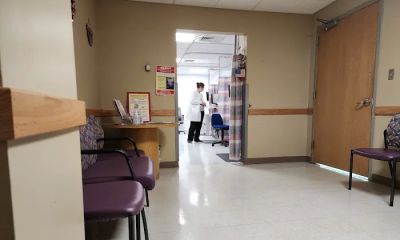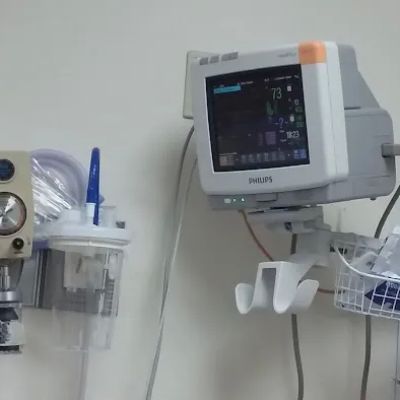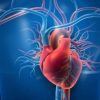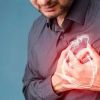Exercise: A Potential Game - Changer in Reversing Heart Disease
- Understanding Heart Disease
- The Role of Exercise in Heart Health
- How Exercise Could Potentially Reverse Heart Disease
- Real - Life Examples of Exercise Making a Difference
- Starting an Exercise Routine for Heart Health
- Taking the Next Step towards Better Heart Health
Understanding Heart Disease
Heart disease encompasses a range of conditions that affect the heart, such as coronary artery disease, heart failure, and arrhythmias. One of the most common forms, coronary artery disease, occurs when the arteries that supply blood to the heart become narrowed or blocked due to the build - up of plaque, a fatty substance. This restricts blood flow to the heart muscle, potentially leading to chest pain (angina), heart attacks, or even heart failure. Heart disease is a leading cause of death worldwide, but the good news is that there are ways to manage and potentially reverse its effects, and exercise is a key player in this battle.

The Role of Exercise in Heart Health
Exercise is not just about building muscle or losing weight. It has a profound impact on the cardiovascular system. When we exercise, our heart has to work harder to pump blood to the muscles. Over time, this causes the heart muscle to become stronger. A stronger heart can pump blood more efficiently, reducing the strain on the heart. For example, think of the heart as a pump. If you regularly train this pump to work harder in a controlled way, like through exercise, it becomes more efficient at its job of circulating blood throughout the body.
Moreover, exercise helps in improving blood vessel function. It can increase the production of nitric oxide, a molecule that causes blood vessels to relax and widen. This vasodilation improves blood flow and reduces blood pressure, which are both crucial for a healthy heart. Additionally, exercise can also boost the body's ability to remove cholesterol from the bloodstream and transport it to the liver for processing, thus reducing the risk of plaque build - up in the arteries.
Atlanta Heart Specialists
atlanta heart specialists
4375 Johns Creek Pkwy #350, Suwanee, GA 30024, USA

How Exercise Could Potentially Reverse Heart Disease
Reducing Plaque Buildup
Some studies suggest that regular exercise can contribute to the reduction of plaque in the arteries. While it may not completely eliminate the existing plaque, exercise can slow down its progression and in some cases, even lead to a reduction. Exercise - induced changes in the body's metabolism can enhance the breakdown of fats and cholesterol, which are the main components of plaque. For instance, a long - term study on patients with coronary artery disease found that those who engaged in regular moderate - intensity exercise showed a significant decrease in the size of atherosclerotic plaques over a period of several years.
Improving Heart Muscle Function
In cases of heart failure, where the heart muscle has become weakened and is unable to pump blood effectively, exercise can play a vital role in reversing the condition. Cardiac rehabilitation programs, which include supervised exercise, have been shown to improve the strength and function of the heart muscle in heart failure patients. By gradually increasing the intensity of exercise over time, the heart muscle can adapt and become more efficient at pumping blood, improving the patient's quality of life and reducing symptoms such as shortness of breath and fatigue.
Enhancing the Body's Natural Repair Mechanisms
Exercise stimulates the release of various growth factors and stem cells in the body. These factors can promote the growth of new blood vessels (angiogenesis) in the heart. This new network of blood vessels can help bypass blocked arteries and improve blood supply to the heart muscle. It's like creating a detour for the blood to reach the areas that were previously starved of oxygen due to narrowed arteries. This natural repair mechanism, triggered by exercise, can be a significant factor in reversing the effects of heart disease.
Real - Life Examples of Exercise Making a Difference
Take the case of John, a 58 - year - old man who was diagnosed with coronary artery disease. He was told by his doctor that he was at risk of a heart attack if he didn't make some lifestyle changes. John decided to take up walking. He started with short walks around his neighborhood and gradually increased the distance and intensity. After a year of consistent walking, along with a healthy diet, his doctor was amazed to see that the plaque in his arteries had reduced, and his heart function had improved significantly. John's story shows that even a simple form of exercise like walking can have a profound impact on reversing heart disease.
Another example is Sarah, a 45 - year - old woman who had heart failure. She joined a cardiac rehabilitation program that included a combination of aerobic exercise, strength training, and stretching. Over the course of six months, Sarah noticed a remarkable improvement in her symptoms. She could walk longer distances without getting tired, and her overall quality of life had improved. The exercise program had helped her heart muscle become stronger and more efficient at pumping blood.
Starting an Exercise Routine for Heart Health
Consulting a Healthcare Professional
Before starting any exercise program, especially if you have heart disease, it's crucial to consult your doctor. They can assess your current health condition, including the severity of your heart disease, and provide personalized recommendations on the type, intensity, and duration of exercise that is safe for you. Your doctor may also recommend a stress test to determine how your heart responds to physical activity before you start exercising.
Choosing the Right Type of Exercise
For heart patients, low - to - moderate intensity aerobic exercises are often a good starting point. Activities like walking, cycling, swimming, and light jogging are excellent choices. These exercises get your heart pumping without overloading it. As you get fitter, you can gradually increase the intensity. Strength training can also be beneficial, but it should be done under the guidance of a professional to ensure proper form and to avoid putting too much strain on the heart.
Setting Realistic Goals
It's important to set realistic goals for your exercise routine. Don't expect to see dramatic results overnight. Start with small, achievable goals, such as walking for 10 minutes a day and gradually increase the time and intensity as your body adapts. Consistency is key. Aim for at least 150 minutes of moderate - intensity aerobic exercise per week, spread out over several days.
Taking the Next Step towards Better Heart Health
As we've seen, exercise has the potential to be a powerful tool in reversing heart disease. To make your exercise routine more effective and enjoyable, consider using fitness trackers like the [Product Name]. These devices can help you monitor your heart rate, track your exercise progress, and ensure that you're exercising at the right intensity. By investing in such a device and making exercise a regular part of your life, you're taking a significant step towards improving your heart health and potentially reversing the effects of heart disease. Don't let heart disease hold you back; start your exercise journey today and take control of your heart health.






















Deborah Heart and Lung Center
deborah heart and lung center
200 Trenton Rd, Browns Mills, NJ 08015, USA